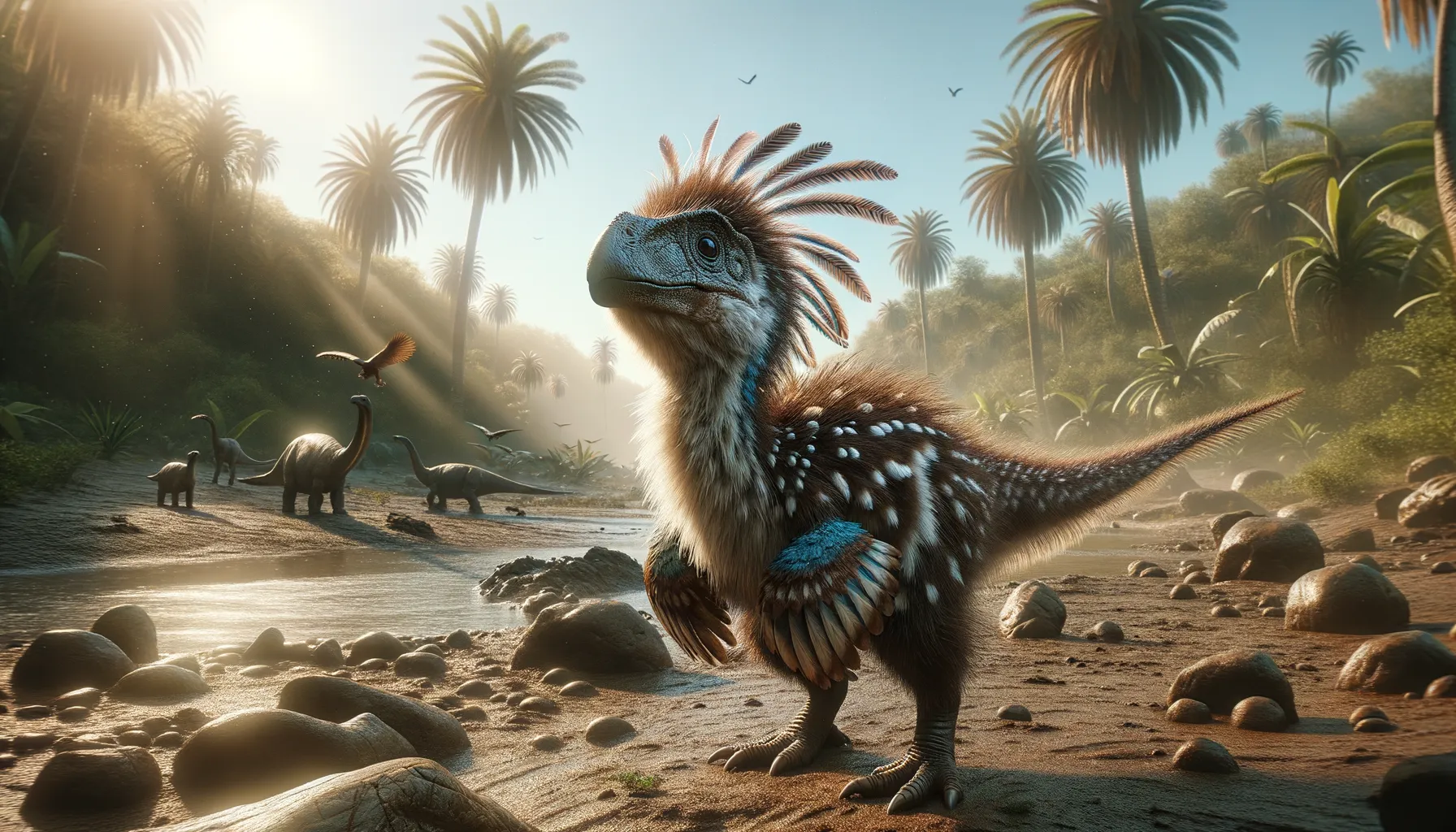
Jianianhualong
Feathered link between dinos and birds.
Period
Cretaceous
Length
Roughly 1 meter long.
Height
About 50 centimeters tall at the hip.
Weight
Approximately 2.5 to 3 kilograms.
Jianianhualong was a small, feathered dinosaur that lived during the Cretaceous period. It belonged to a group known as troodontids and is notable for its well-preserved feathers, offering insights into the evolution of feathered animals. With a size comparable to a turkey, this dinosaur is important for understanding the evolutionary link between dinosaurs and birds. Its fossils provide valuable information on its physical characteristics and life in its natural habitat.
Diet
Jianianhualong was likely an omnivore, feeding on small animals, insects, and possibly plants. Its diet would have depended heavily on the availability of food sources in its environment.
Hunting
As a small dinosaur, it likely used stealth and quick movements to catch prey. Jianianhualong's size and speed suggest it targeted smaller, slower animals and insects.
Environmental challenges
Living during the Cretaceous period, Jianianhualong faced various environmental challenges, including changes in climate and vegetation. Predators likely posed a significant threat due to its small size. It had to navigate a dynamic and often harsh landscape, which required adaptability and resilience to survive.
Speed
Relatively slow due to its small size.
Lifespan
Expected to have lived around 10 to 15 years.
First discovery
Discovered in Liaoning Province, China in 2017.
Fun Facts
- Jianianhualong is a feathered dinosaur that lived during the Early Cretaceous period, around 125 million years ago.
- It was discovered in northeastern China, an area known for yielding many well-preserved fossils.
- Jianianhualong is notable for having asymmetrical feathers, similar to those of modern birds, which suggests that it was capable of some form of flight or gliding.
- Despite its bird-like feathers, Jianianhualong is more closely related to non-avian dinosaurs than to birds.
- The name Jianianhualong means 'Jianianhua dragon,' named after the company Jianianhua, which supported the research.
- Jianianhualong was roughly the size of a turkey, making it relatively small compared to many other dinosaurs.
Growth and Development
Jianianhualong likely grew rapidly after hatching, similar to modern birds. Juveniles probably had different plumage compared to adults, which helped them blend into their environment. Growth rates would have varied based on environmental conditions and food availability.
Habitat
Jianianhualong inhabited forested areas with access to open spaces for hunting. The presence of water sources would have been crucial for its survival. It's likely that it shared its habitat with a diverse array of other species, both predators, and potential prey.
Interaction with other species
Jianianhualong interacted with both predators and prey in its ecosystem. It might have competed with other small dinosaurs for food resources. Its feathers could have played a role in communication or mating displays with others of its kind.
Natural lifespan
Jianianhualong lived naturally for around 10 to 15 years.
Reproduction
Jianianhualong likely reproduced by laying eggs in nests. Parental care might have involved guarding the eggs against predators. Hatchlings would have needed to develop quickly to avoid danger.
Social behaviour
Its social behavior might have included living in small groups for protection. Displays using its feathers could have been used for attracting mates. Communication within groups would have been important for survival.
Fossil locations
Fossils of Jianianhualong have been primarily found in the Liaoning Province of China. This region is renowned for its exceptional preservation of feathered dinosaurs. Its discovery adds to the significant paleontological record of the area.
